As I write this, the little house where we have our office is shaking in the buffeting gale force winds that sweep in from the north. It’s a ground blizzard day.
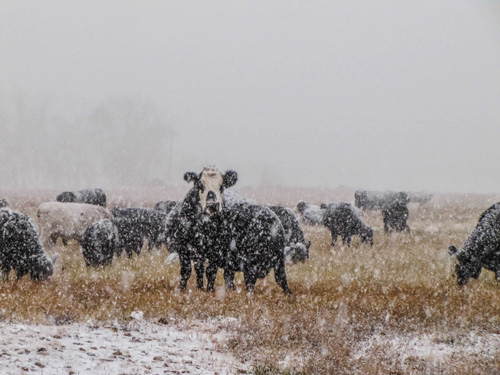
The recipe for a successful blizzard started this morning with key ingredients of 8 inches of light powder snow that fell over the past two days and dry cold temperatures in the mid-teens. Then, a brisk 20 mph wind from the Arctic North was added to the mixing bowl, and a ground blizzard commenced. There are even some streaks of blue above in the winter sky; but a look at the horizon, and all I can see is driving snow, propelled horizontally across the Alderspring prairie.
Cowboy Josh fed the beeves this morning and prepared for the wind with the penguin method; Alderspring’s lesson learned from the South Pole. He fed our green grass hay in tight concentric circles so that the beeves would gather together and conserve body heat by their own mass, just as the Emperor penguins do in the Antarctic. When beeves on the outside of the mass get cold, they work their way inside to the warmth of the interior. It works, and nearly any storm can be weathered comfortably by beeves cared for in this way, provided they have the wild northern genetics intact enough to grow plenty of hair and backfat. Alderspring beeves do.
It’s also got to do with what they are used to. They’ve spent a lifetime in this environment, after all.
Back in 2002, I was standing in a hayfield in Melba, Idaho, looking at some pasture to lease. The idea was that since Melba was nearly 4000 feet lower in elevation than the home ranch in Idaho’s central mountains, our cattle could winter there more cheaply than at home.
After all, the growing season was nearly 5 months longer than at home, and it was something I had been considering for a while. What could be better than the cow equivalent to snowbirding in Florida or Arizona? It seemed like a good idea at the time.
But after talking to Bill, the owner of the hayfield, second thoughts about such ideas precipitated like never before. It had to do with a story he related to me as we walked through lush pastures, a story about football, of all things.
“Where did you say you were from?” Bill asked as I pulled up some grass.
“From May. Near Challis.” I took a bite, chewed it for awhile, and spit it out. We don’t digest grass, after all, and taste was all I was after. I had made a habit out of tasting grass before putting our beeves on it.
“Really? I used to be the principal in Mackay before I took the same job at Melba High School.”
“No kidding?” Mackay was in the next valley from the Pahsimeroi, and was the next town to the south. It was indeed a small world, especially since Mackay was one of those hole-in-the-wall western cow towns with a population that couldn’t exceed 200. Our own hometown of May’s school had closed years ago due to population loss in our remote valley. Maybe it was in part due to lack of interest. Education wasn’t the biggest priority in cow country. Rodeo and football seemed to take a front seat in most classrooms, as Bill was about to relate.
“Mackay hasn’t really changed very much in the 10 years since I worked there. I had a chance to go back and visit with Melba’s small but talented football squad last year to face the Mackay Miners in district championships.”
“How did Melba’s team do?”
“The Melba Mustangs? They got killed.” We stopped walking across the hayfield, and Bill looked directly at me. I knew there was a story here.
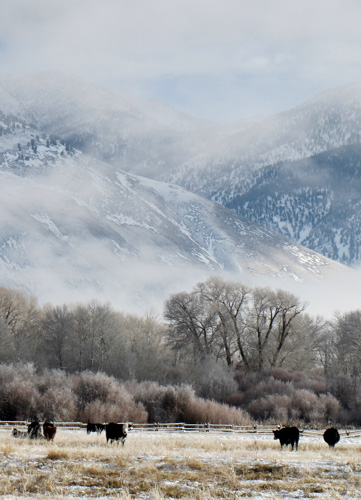
“What happened?”
“It was November. My Melba Mustangs loaded up here off green grass and nearly 70 degrees. By the time we unloaded the team in Mackay 4 hours later, the temp had dropped to the mid 20s, and it was snowing, driven by an icy wind that blew straight off the 12,000 foot frozen peaks of the Lost River Range.”
“Ouch.”
“Ouch is right. The Mackay Miner team acted as if nothing was up. My team was smacking their hands on their chests trying to keep warm. The grass on the field was a dry brown, and the ground was frozen and brick hard underneath it. Frozen feet in football cleats slid across it in the new snow. It was a hard first half.”
I winced. “These were State level championships. Wasn’t that enough? Your team had to want it.”
“Oh, and they did. They were really psyched up on the way up here. After all, Mackay’s student body was tiny. They figured that there couldn’t be much talent there. But there was something else in the halftime break that absolutely convinced me we didn’t have a chance. It was in what was happening behind the bleachers.”
“Behind the bleachers?”
“Yep. It was a bunch of little kids from Mackay. Like around 5 to 7 years old. They got bored watching their older brothers play football, so they started their own pickup game on the frozen mud at the edge of the parking lot. The 20 degree wind continued to drive in the snow that wisped its way underfoot in tattered sneakers and kid sized cowboy boots as they tackled and scrimmaged their own version of the gridiron. And here’s the kicker.” He caught my eyes and paused for effect.
“Even though the wind chill was probably around zero degrees, they were wearing T-shirts.”
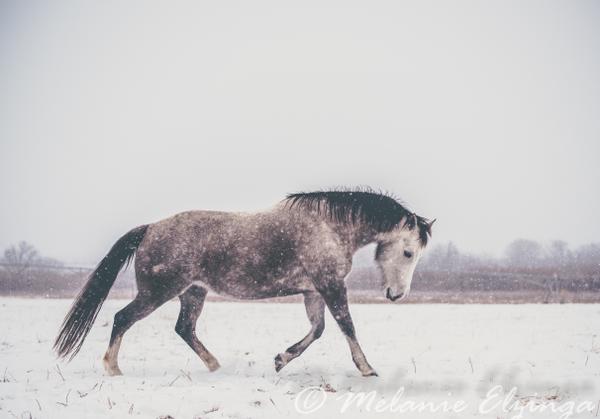
I smiled, though unsurprised. Mackay people were tough. Living at over a mile high, stuck between two mountain ranges over 7000 feet higher and a trough shaped valley that acted as a wind tunnel where below zero was just another day in paradise. I knew adults who wore T-shirts in 20 degrees, and it was dang likely that they spawned kids who behaved the same.
Bill continued, unsmiling, as he stared off to the horizon, seeing it in replay. “As I turned around in my own frozen state in the bleachers as halftime ended, I knew it was over. We were dead. I watched my demoralized and frozen team woodenly go through the motions against what was like the nonchalant Green Bay Packers playing on their home field and familiar territory of frozen “tundra” grass field against the Dallas Cowboys. The Miner boys were smiling and having fun. My Mustangs looked like they’d been already rode hard and put away wet and frozen. At the end of the game, they loaded on the bus silently for the drive home.”
“You should have known. You lived in Mackay, after all.”
“Yep, but I had forgotten.”
As Bill and I continued to talk about the possibility of the grazing lease, I began to come to the realization that it wouldn’t work. Alderspring cattle were genetically adapted and simply used to their life in the high Pahsimeroi, and it wouldn’t do to bring them to another softer environment. It’s not like we were having problems with weight gains. They, like those Mackay Miner boys, were happy at home. They thrived on Alderspring. Like the old adage states, “If it ain’t broke, don’t fix it.”
And so we didn’t. I often have customers ask about the barns we keep our cattle in when the winter winds blow, but they don’t understand. The beeves often come running and bucking happily when we show up in the winter for the daily feed, regardless of weather. When we put one of our range cows in the barn, they are noticeably uncomfortable and quite agitated until they have the big sky above and fresh air in their nostrils. It’s the way they are made.
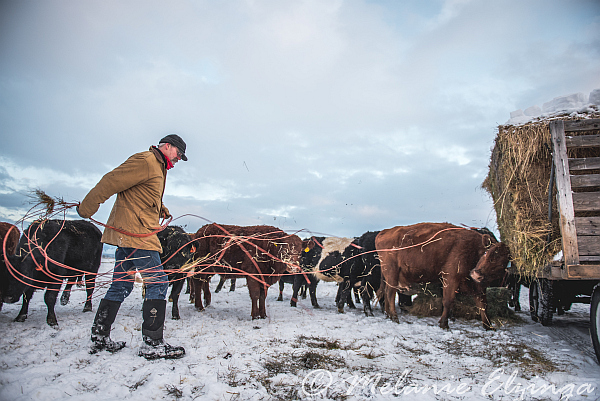
And if they’re comfortable, I can rest easy that we’ve done our husbandry best. After I presented how we graze the range with our beeves in wild country a few weeks ago at a sustainable agriculture symposium in Boise, one of the first folks to thank me was a woman in leadership of the Southern Idaho Humane Society. She completely grasped the appropriateness of beeves running in wild country, and hated the feedlot model, which even some “grassfed” producers utilize. It is one of the many things that sets Alderspring apart, and is what sets you apart, as partners in our ranching endeavor.
Thanks for being on our team. Even if our players are just wearing T-shirts. Quite happily, I might add, as they graze green goodness on frozen ground. They wouldn’t want it any other way.
Happy Trails.
Glenn, Caryl, girls and Cowboys at Alderspring

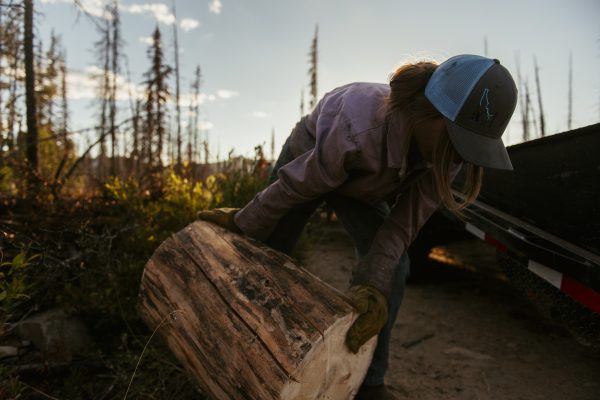





Leo Younger
As a herd animal, it’s understandable that a single beeve in a barn would be “noticeably uncomfortable and quite agitated.” If several beeves are together in the same barn, is the same degree of discomfort and agitation displayed? Would it follow that the larger the herd, the greater the comfort of the beeves within the herd? However, as you’ve previously written, the beeves have less, if any, illness outside than in a barn. Also, from the viewpoint of a seeker of the healthiest ruminant fat, wherever the beeves will best acquire it is where they need to be.